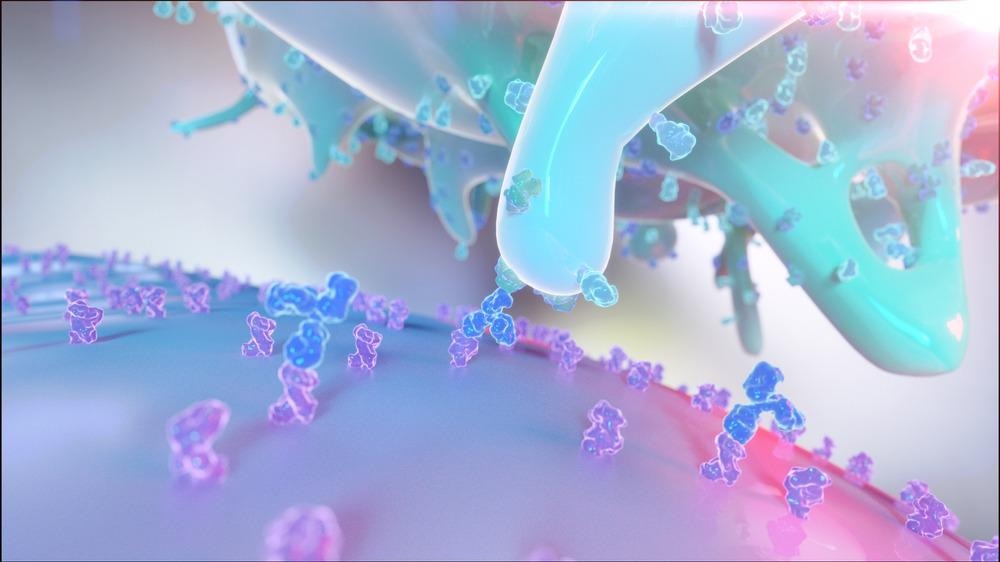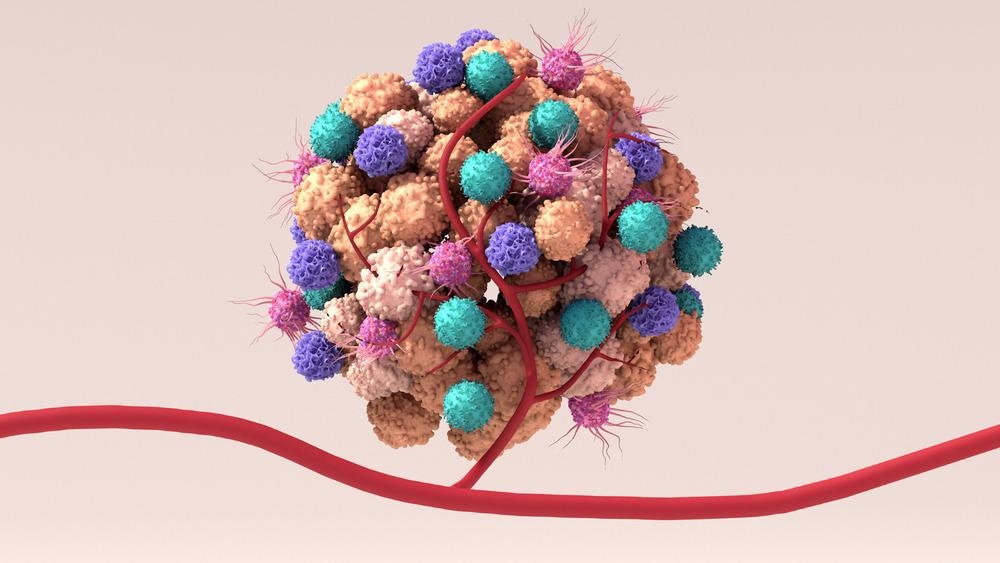Immunopeptidomics is a new research technique used to identify antigens presented on major histocompatibility complexes by antigen-presenting cells. It uses mass spectrometry of samples prepared from cell cultures or tissue samples to identify these antigens and is an emerging technique in several research areas, including identifying tumor neoantigens for cancer immunotherapy and identifying potential target antigens for vaccine development.

Image Credit: Alpha Tauri 3D Graphics/Shutterstock.com
Isolating Antigens
Antigen presentation occurs when proteins and peptides are broken down into smaller antigen sections, which are then presented extracellularly by major histocompatibility complexes (MHCs). There are two classes of MHC: class I allows the presentation of intracellular cytosolic antigens; class II presents extracellular or vacuolar antigens. MHC class I is expressed by all nucleated human cells and presents to T cells via their expression of the CD8 surface protein, whereas MHC class II is restricted in expression to professional APCs, such as macrophages and dendritic cells, and interacts with CD4 on CD4+ T cells.
Isolating MHC-presented antigens is a process that varies slightly depending on the source material. For example, lymphoma cell lines can be cultured if aiming to identify neoantigens in B cell lymphomas. Both classes of MHC could be isolated from the prepared culture, as B cells are APCs themselves.
However, for infection-based antigen identification, antigens may be isolated from infected tissue samples, meaning that the tissue would need to be lysed more thoroughly, and only MHC class I could be used for immunoprecipitation. Alternatively, known pathogens can be introduced to populations of professional APCs, allowing antigen presentation in culture on both classes of MHC.
The next step is to use anti-MHC antibodies (specific to either class I or class II, depending on sample preparation) to immunoprecipitate MHC and the attached antigens. These antibodies are typically coupled to purification beads, either sepharose or magnetic. After the test sample is incubated with these beads, MHC will be bound, and the remaining cell debris and unbound proteins can be washed away. The bound MHC can then be eluted from the antibodies by acidic elution, and further acidic elution can then be used to remove the antigens from the MHC. The eluted antigen solution can then be analyzed to identify the individual antigens.
Identifying Antigens
Mass spectrometry is the most common method of antigen identification that can then be used for the eluted solution. This identification process involves the fragmentation and ionization of samples, followed by passing them through a magnetized tube. This will separate the fragments based on their mass-to-charge ratio, as they will be curved differentially by the magnetic field. A variety of detection methods can then be used to produce a spectrum for each fragment, which will have peaks that correspond to molecular charges within the fragment.
The final step of immunopeptidomics is to analyze the mass spectrometry results to sequence the antigens. Mass spectra are typically analyzed using specialist software to identify known amino acid structures from the charges in the fragments. Protein mass spectrum analysis software can also compare antigens to one another within large samples.
Statistical significance can be assessed to identify the most common epitopes and use any of a myriad of databases to compare known or predicted sequence motifs to the results found. The sequenced antigens can then be used to research the development of molecules to mimic or inhibit antigen interactions or use these short antigens for vaccination research.
Current Uses of Immunopeptidomics
Identifying antigens is a valuable laboratory technique in several fields of research. One area in which immunopeptidomics is becoming a more common technique is developing cancer immunotherapies. Cancer immunotherapy exploits the naturally-occurring immune system elements to target tumor cells directly. One of the most prominent techniques is the genetic modification of T cells to recognize tumor-associated antigens.
Part of this requires developing treatments with tumor specificity to avoid off-target effects, which can be achieved by targeting neoantigens – antigens that are only expressed by tumor cells, not healthy cells. Identification and characterization of these via immunopeptidomics is important in developing treatments that hold this specificity.
As patient-specific personalized medicine becomes more prominent, there is also potential for patient-derived antigens to be identified by immunopeptidomics, allowing for the development of immunotherapeutic treatments that are specific to an individual and thus more effective.
Recently, immunopeptidomics has also come to the forefront of research to study severe acute respiratory syndrome coronavirus 2 (SARS-CoV-2), or COVID-19. While mRNA vaccines have been the primary choice for reducing the impact of the COVID-19 pandemic, other vaccines were proposed that sought to target specific surface proteins expressed by the virus.
One of these surface proteins is known as SARS-CoV-2 spike glycoprotein, and the antigens processed by dendritic cells from healthy donors that were incubated with it were characterized by an immunopeptidomics study. The antigens of this glycoprotein that were frequently sequenced were deemed to be the antigens most likely to invoke a successful T cell response, making them more viable candidates for use in a vaccine.
Overall, immunopeptidomics is a vital laboratory process for identifying antigens expressed in various circumstances and is becoming more pertinent to research in multiple fields.

Image Credit: Design_Cells/Shutterstock.com
Sources:
- Chong C, Coukos G, Bassani-Sternberg M (2021) Identification of tumor antigens with immunopeptidomics. Nat Biotechnol. https://doi.org/10.1038/s41587-021-01038-8
- Knierman MD, Lannan MB, Spindler LJ, McMillian CL, Konrad RJ, Siegel RW (2020) The Human Leukocyte Antigen Class II Immunopeptidome of the SARS-CoV-2 Spike Glycoprotein. Cell Rep 33(9):108454. https://doi.org/10.1016/j.celrep.2020.108454
- Kovalchik KA, Wessling L, Saab F, Ma Q, Despault J, Kubiniok P, Hamelin D, Faridi P, Li C, Purcell A, Tognetti M, Reiter L, Bruderer R, Lanoix J, Bonneil É, Courcelles M, Thibault P, Caron E, Sirois I (2020) Immunopeptidomics for Dummies: Detailed Experimental Protocols and Rapid, User-Friendly Visualization of MHC I and II Ligand Datasets with MhcVizPipe. bioRxiv :2020.11.02.360958. https://doi.org/10.1101/2020.11.02.360958
- Mayer RL, Impens F (2021) Immunopeptidomics for next-generation bacterial vaccine development. Trends Microbiol 29(11):1034–1045. https://doi.org/10.1016/j.tim.2021.04.010
Further Reading